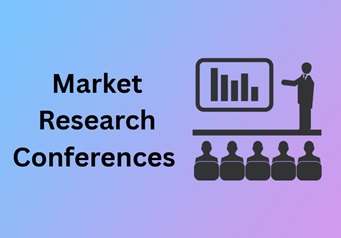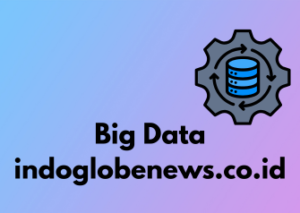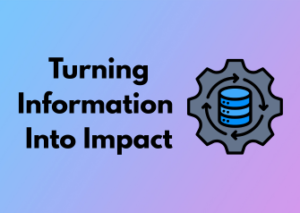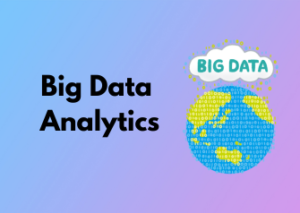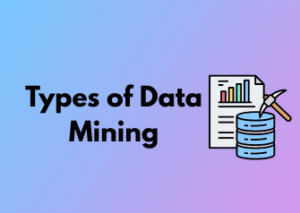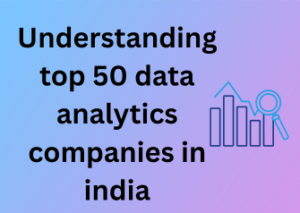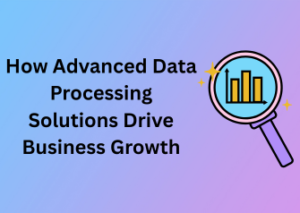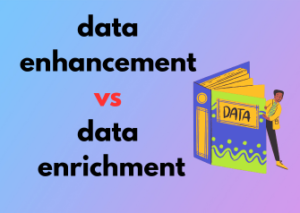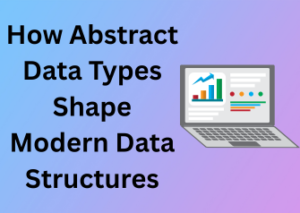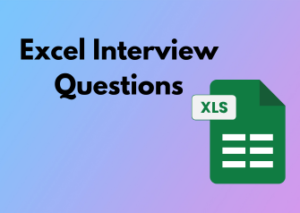Let’s dive into a topic that’s reshaping the way businesses operate today: the growing influence of data-driven decisions. Gone are the days when intuition or gut feeling alone dictated big moves. We’re living in a world where data is no longer just a byproduct of operations—it’s a powerful strategic tool. But what makes it so important? Allow me to walk you through it in plain language.
The Power of Data in Business Strategy
Every interaction we have—be it online shopping, browsing social media, or even simple daily transactions—generates valuable data. Smart businesses know how to make sense of that data to drive decision-making that’s both precise and impactful. Why does it matter? Because when decisions are based on data rather than guesswork, the likelihood of success skyrockets. It’s like having a map instead of wandering aimlessly hoping to stumble upon the right path.
For example, if a company notices that its younger customers respond better to video ads rather than traditional email marketing, that’s actionable information. Now they’re not wasting money on ineffective strategies—they’re doubling down where it counts. That’s data-driven decision-making at its finest.
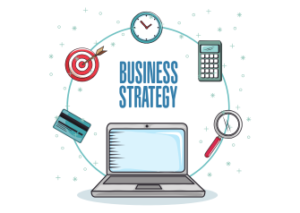
Why It’s a Game-Changer for Businesses Big and Small
You might be thinking, “Okay, sounds good, but isn’t this only for tech giants with huge budgets?” Absolutely not! Thanks to modern technology, tools to collect and analyze data have become more accessible, even for small and medium businesses. Take customer surveys, website traffic tools, or social media analytics—essentially affordable (or even free!) options that provide the information needed to steer your ship in the right direction. Think of it as leveling the playing field.
- Small businesses: Imagine a local café learning from survey responses that their customers would love vegan options. By adapting their menu accordingly, they not only meet demand but stay ahead of competitors.
- Large corporations: Picture a retail giant predicting fashion trends for the upcoming season using advanced analytics. They no longer have to guess—they launch products they’re confident will sell.
Whether it’s a corner bakery or a Fortune 500 corporation, taking advantage of data is like having a crystal ball that reveals what customers want, what trends are gaining traction, and, most importantly, what the next step should be.
Tips for Embracing Data-Driven Decisions
- Start small: Don’t feel pressured to analyze massive amounts of information right away. Even a single customer survey or a week’s worth of social media analytics can reveal valuable insights.
- Choose the right tools: Tools like Google Analytics, Tableau, or even Excel can help interpret data effectively. Find what works for your business before investing in fancy software.
- Make it a habit: Data collection and analysis should be ongoing. It’s not about making one informed decision—it’s about creating a process for continual improvement.

How Leading Organizations Use Research to Steer Industry Trends
Hello there! Let’s dive into one of the most fascinating aspects of market research: how cutting-edge organizations harness its power to not just keep up with—but dictate—industry trends. Trust me, there’s a whole lot more to this than simply crunching numbers or glancing at reports. It’s about strategy, foresight, and shaping the future!
The Strategy Behind Staying Relevant
Here’s the thing: in today’s fast-moving world, businesses can’t afford to wait for trends to happen. Leading organizations are ahead of the curve because they emphasize proactive research. They use market research not just as a reactive tool but as a strategic crystal ball. How? They start by asking the right questions:
- What are consumers seeking that they currently can’t find?
- Are competitors overlooking opportunities that can be capitalized on?
- What societal, economic, or technological shifts will shape customer preferences in the future?
For example, some of the best companies are laser-focused on understanding their audience at a deep level by examining behavioral insights. It’s the difference between simply following the trend of, say, sustainability and creating hyper-personalized products that set sustainability standards for the industry. Fascinating, right?
Using Research to Shape Consumer Expectations
Smart organizations also recognize the immense power of introducing innovations backed by research. Have you ever wondered why some companies always seem to be one step ahead? Well, they aren’t leaving it to chance. They use research not only to understand the present mood of the market but also to anticipate what it will look like a year—or even five years—from now.
Take the tech industry, for example. Major players like Apple and Tesla consistently launch products that eventually redefine their industries. This doesn’t happen by accident. Their R&D (research and development) teams spend countless hours studying emerging technologies, analyzing competitor gaps, and running consumer surveys so that they can create trends rather than follow them. That smartwatch on your wrist or that electric car in your garage? All of this resulted from research-backed decision-making that influenced market expectations.
Collaboration: Turning Research into Action
Here’s a secret sauce successful companies often keep close to the chest: collaboration. They don’t silo their research data. Instead, they merge insights across departments—marketing, product development, sales—to create a cohesive strategy. These companies often host internal brainstorming sessions to turn raw data into actionable ideas. Pretty cool, huh?
One great example of this is the fashion industry. Some of the most iconic brands collaborate with trend forecasting agencies and grassroots research firms to predict colorways, styles, and patterns before they even hit the runway. They don’t just launch a collection based on what shoppers bought last season; they aim to awaken new desires.
How You Can Learn From Them
If you’re looking to make wiser decisions in your own professional sphere, you can borrow a page from these top players. Here’s how you can start:
- Gather data consistently: Staying informed about your target audience is a nonstop effort. Use surveys, interviews, and analytics tools to understand customer trends as they evolve.
- Look beyond the numbers: Sometimes, the why behind consumer behavior is hidden in qualitative data like freeform responses, interviews, or personal anecdotes.
- Think big picture: Don’t just aim to participate in your market—think about how your work can shape it.
Keynote Sessions: Insights from Experts Shaping the Future
When it comes to market research, there’s nothing quite like hearing directly from the people driving meaningful change. The keynote sessions at the Market Research Conference aren’t just another set of presentations; they’re dynamic, thought-provoking conversations where top industry experts share the kind of insights that can spark innovation and inspire action.
Have you ever wondered how the leaders in market research anticipate shifts before they happen? Or how they navigate the complexities of data interpretation, consumer behavior, and innovation in real-time? Well, these keynote sessions dig deep into challenges and trends that are shaping the landscape — equipping you with cutting-edge perspectives straight from the innovators themselves.
Why Keynotes Matter
Think of keynote sessions as the heart of any great conference. They’re the moments when the spotlight shines brightest on key thought leaders who are pushing boundaries and sharing knowledge that can’t be Googled. These experts don’t just talk at you — they weave their experiences, lessons, and predictions into engaging stories that stick with you long after the conference ends.
Keynotes are about getting the big picture — and that’s invaluable for anyone interested in understanding how market research is evolving and where opportunities lie. Whether you’re a decision-maker, an industry enthusiast, or someone new to research, these sessions have something for everyone.
What You Can Expect
- Live Case Studies: Learn from real-world case studies shared by speakers who’ve led transformative research projects. These aren’t abstract theories — they’re battle-tested examples of what works and what doesn’t.
- Future-focused Insights: Discover where the industry is headed in the next 5, 10, or even 20 years. From AI disrupting traditional approaches to new methods for engaging audiences, the future of research has never been more fascinating.
- Lessons on Leadership: Go beyond data and tools to understand how today’s research leaders manage teams, stay adaptable, and drive innovation in demanding markets.
Who’s Taking the Stage?
Expect a diverse lineup of industry veterans, cutting-edge disruptors, and academic pioneers. Typically, speakers are carefully chosen for their ability to blend expertise with relatability. Imagine a data scientist who knows how to turn complex patterns into actionable insights, or a brand strategist who’s spent years decoding shifting consumer expectations. Each keynote speaker brings their own unique lens on the market research industry.
Some speakers will focus on high-level strategy, while others might focus on emerging methodologies or tools that are changing the way research is conducted. You’ll leave these sessions inspired, energized, and thinking about what you can apply to your own work or business.
A Few Pro Tips for Enjoying the Sessions
- Take Notes: You’ll hear a lot of groundbreaking ideas, and it’s easy to forget details without jotting them down. Whether you prefer a classic notepad or a note-taking app, be ready to capture key takeaways.
- Ask Questions: Many keynotes incorporate Q&A segments. Don’t be afraid to participate — this is your chance to engage directly with thought leaders. Prepare thoughtful questions ahead of time!
- Connect: During breaks, introduce yourself to other attendees and strike up conversations about the session. Sharing your thoughts can spark additional ideas while helping you network.
Workshops that Bring Real-World Problems to the Forefront
Workshops are more than just a trending feature at conferences; they are the beating heart of hands-on learning and collaboration. At the Market Research Conference, the workshops are specifically designed to take real-world business challenges and transform them into opportunities to learn, innovate, and grow. Whether you’re new to the field or a seasoned expert, these sessions are perfect for tackling those pesky industry issues in a way that’s both engaging and practical.
Why Are Workshops So Impactful?
Let’s face it—listening to panels and keynotes offers valuable knowledge, but it’s the doing that often sparks inspiration. Workshops bridge the gap between theory and practice. They offer participants the chance to roll up their sleeves and actively work through scenarios resembling real-world complexities.
By collaborating in small groups or interactive formats, attendees not only gain skills but also learn how to apply them to their own work environments. And the cherry on top? They get the chance to hear diverse perspectives, which can help generate creative solutions to even the most daunting hurdles.
What Can You Expect from These Workshops?
The workshops at this year’s Market Research Conference aim to provide practical takeaways and thought-provoking exercises. Here’s a sneak peek at what to expect:
- Case Studies in Action: Dive deep into examples of actual market research challenges faced by companies. You’ll work to identify pain points, strategize solutions, and develop actionable recommendations.
- Participatory Problem Solving: Have a sticky issue in your own work? Some workshops are structured to invite attendees to contribute their dilemmas, turning them into group exercises. This creates a free-flowing exchange of ideas where everyone learns something unique.
- Masterclasses with Experts: These sessions allow you to learn directly from experienced professionals. They’ll share their toolkit of problem-solving approaches and facilitate group discussions to help refine your methods.
- Simulation Exercises: In these immersive activities, you’ll act as part of a team tackling a theoretical, but highly realistic, business challenge. It’s like diving headfirst into the deep end of the market research pool, but with the safety net of dedicated guidance!
Top Tips for Getting the Most out of a Workshop
- Come Prepared: Read up on the workshop’s topic beforehand if you can. Even 10 minutes of research can make all the difference in how you engage with the material.
- Be Open to Collaboration: Leave your ego at the door! The best ideas come from collective brainpower. Plus, networking in this environment often blossoms into partnerships or mentorships down the line.
- Take Notes: Don’t trust your brain to remember every golden nugget of wisdom. Write down key insights, strategies, or challenges discussed so you can revisit them post-conference.
- Ask Questions: This is your chance to gain real-time feedback from experts and peers. Don’t hesitate to ask questions that dig a little deeper into the topic at hand.
Networking Spaces Designed for Collaboration and Idea Exchange
When we think about conferences, often the first things that come to mind are keynote speakers and workshops. But let’s not forget one of the most valuable aspects of any event: networking. It’s in those casual conversations during coffee breaks or purpose-built networking areas where some of the most impactful moments happen. For a Market Research Conference, this is no exception. In fact, the networking spaces become a buzzing hub for idea exchange, partnerships, and inspiration.
Why Networking Spaces Matter
You might wonder, why do we need dedicated networking areas? Can’t people just mingle anywhere? While spontaneous conversation is great, having intentional, thoughtfully designed spaces for collaboration ensures that attendees have a clear opportunity to connect. These spaces act as a bridge between inspiring talks and tangible action, allowing professionals from diverse industries to exchange ideas that bring data and creativity together like never before.
The value of networking isn’t just about trading business cards; it’s about creating meaningful relationships. Here, professionals can share their unique insights and dive deep into discussions on market research trends, methods, or even tech innovations. These discussions often ignite new perspectives that attendees can apply to their own organizations.
Features That Drive Collaboration
Networking spaces at a conference aren’t just randomly placed tables or chairs in a room. To truly foster collaboration, these areas are purposefully designed. Here’s what makes them stand out:
- Interactive Stations: Many networking areas include activity hubs like brainstorming walls, live data visualization demos, or even digital features like interactive polls. These elements spark immediate conversations and engagement.
- Themed Roundtables: Organized discussions around specific topics allow attendees to dive deeper into their areas of interest, such as segmenting customers based on behavioral data or exploring emerging markets.
- Relaxed Environments: Networking doesn’t have to happen in formal settings. Cozy seating, warm lighting, and even fun elements like coffee bars or snack corners make it easier for attendees to approach others without hesitation.
- Facilitated Introductions: Not everyone finds it easy to approach new people. That’s why many events now include networking support like matchmaking apps or even “networking hosts” who help break the ice.
Making the Most of It
If you’re attending the Market Research Conference, here are some tips to maximize your time in the networking spaces:
- Prepare an Elevator Pitch: Be ready to succinctly introduce yourself and your goals in the industry. This will help you start meaningful conversations quickly.
- Ask Open-Ended Questions: Instead of the standard “What do you do?” ask questions that invite discussion, like “What trends do you think will define market research in the next five years?”
- Bring Value: Networking isn’t just about taking—it’s also about giving. Share a useful tip, tool, or resource you’ve learned from your experiences.
- Follow Up: Networking doesn’t end when you leave the room. Be sure to connect on LinkedIn or follow up with an email to keep the conversation going.
Debunking Myths: Separating Facts from Assumptions in Market Research
Market research, when used correctly, is one of the most powerful tools businesses can wield. However, over the years, misconceptions and myths about what market research can and cannot achieve have clouded its true potential. Let’s take some time to debunk these myths and reveal the actual value of market research, all while ensuring we keep things engaging and easy to follow!
1: Market Research Is Only for Big Companies
One common misconception is that only large corporations with deep pockets can afford or benefit from market research. This couldn’t be further from the truth! Market research is for everyone — from startup founders with a solid idea to small businesses trying to pinpoint new opportunities. In fact, smaller organizations often gain more by conducting targeted research since it helps them focus limited resources on strategies that truly resonate with their customers.
Pro Tip: Tools like Google Forms, social media polls, and affordable survey platforms like SurveyMonkey or Typeform make it easy for anyone to gather insights quickly and effectively!
2: It’s Just a Fancy Way of Confirming What You Already Know
Too often, businesses approach market research with the mindset of validating pre-existing beliefs. If misused this way, research can become biased, reducing its impact. The reality is that **great market research challenges assumptions and uncovers unexpected truths.** A respondent’s behavior or preference can surprise even the most seasoned strategists!
For example, you might assume your product appeals most strongly to millennials, but a well-structured study could reveal a surprising number of Gen Z users engaging with it. Understanding these realities, rather than clinging to assumptions, is what empowers businesses to grow and evolve.
3: Once You’ve Done It, You’re Done
Another frequent myth? The belief that market research is a one-time event. **Markets are dynamic**, and consumer preferences, landscapes, and behaviors shift constantly. Conducting research only once might leave you out of step with your audience over time. Staying engaged and periodically revisiting your research is crucial for maintaining relevance.
- For example, consumer needs during a pandemic will differ drastically from those during more stable periods.
- Attitudes toward technology, sustainability, and convenience may shift over just a few years. If your business doesn’t adapt, you risk being left behind!
4: You Need a Perfect Response Rate to Make It Worthwhile
Have you ever worried that your study will be meaningless if only 20% of people respond? Good news: **you don’t always need sky-high response rates.** What matters more is ensuring that your sample represents the target audience. By focusing on sample diversity, well-crafted questions, and data analysis, even a modest response can yield powerful insights.
Remember: Quality beats quantity when it comes to actionable market research data.
The Role of Technology in Transforming Market Research Practices
Market research isn’t what it used to be—and that’s a good thing! In the past, business decisions often relied on manual surveys, person-to-person interviews, or intuition, leaving gaps in accuracy, speed, and scale. Fast-forward to today, and technology has revolutionized how we conduct market research, turning it into a highly sophisticated, data-driven process. Let’s dive into how technology is reshaping this field and empowering businesses like never before.
The Era of Automation: Getting Results Faster
Gone are the days of waiting weeks (or months!) to analyze survey results. With advancements in artificial intelligence (AI) and machine learning, market research tools can now collect, organize, and analyze data at lightning speed. Tools like predictive analytics and natural language processing (NLP) help researchers comb through mountains of customer feedback, product reviews, or social media chatter in seconds, providing actionable insights right when they’re needed.
For instance, platforms powered by AI can automatically identify trends or consumer pain points. This way, businesses can make more responsive and informed decisions, whether that’s tweaking a product design or adjusting marketing strategies—talk about efficiency!
Accessing Global Insights with Big Data
The rise of big data has unlocked a treasure trove of insights from across the globe. No longer constrained by physical borders or time zones, modern market researchers can now tap into real-time information gathered from various sources like online behavior, IoT devices, and purchase patterns. Big data systems allow organizations to understand not just “what” their audience is doing, but also “why” and “how” customers make decisions.
For businesses, this means going beyond surface-level numbers to uncover deep, actionable patterns. Want to understand why Gen Z from different regions purchases items differently? Big data has an answer!
Virtual Focus Groups: A Game-Changer
Focus groups used to be limited to conference rooms, but now they’ve gone virtual—and with some serious perks. By hosting focus groups online, companies can gather participants from diverse demographics and geographies while cutting down on logistical costs. What’s more, tools like video conferencing platforms integrated with sentiment analysis can track emotions and reactions in real time, adding another layer of depth to the research process.
This seamless digital experience makes it easier to gauge not just what participants say, but how they feel, creating a more holistic understanding of customer sentiment.
The Social Media Effect
Love it or hate it, we cannot deny the impact of social media on market research. Platforms like Facebook, Twitter, Instagram, and even TikTok host billions of vocal users sharing honest opinions about brands, products, and trends. With advanced social listening tools, companies can now pinpoint consumer attitudes, address complaints early, or even predict trends before they blow up. It’s like having a crystal ball for customer preferences!
AR, VR, and the Future of Market Research
If you think augmented reality (AR) and virtual reality (VR) are just for gamers, think again! These technologies are starting to influence market research in creative ways. Companies can now test prototypes in virtual environments or take consumers through immersive shopping experiences to observe their behavior. It’s like test-driving the future—and the insights are groundbreaking.
What Does This Mean for Businesses?
- Enhanced decision-making with faster, more accurate data.
- Broader access to global perspectives through big data and virtual platforms.
- Greater cost efficiency by automating repetitive tasks and scaling research efforts.
Ultimately, technology has turned market research into an ongoing conversation between businesses and consumers, leading to closer connections, smarter decisions, and happier customers. So regardless of your industry or company size, now’s the time to embrace these tech-driven innovations. Who knows? The next big breakthrough in market research might be just a click—or a tap—away.
“`

